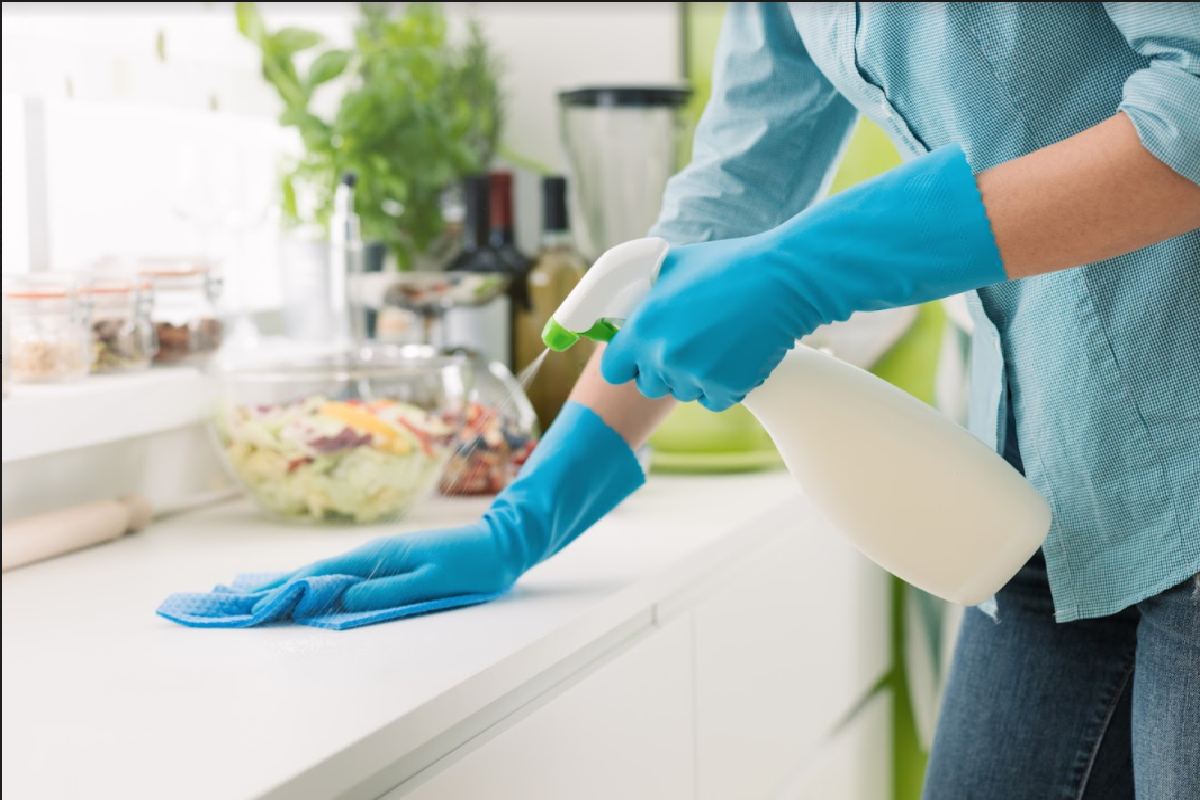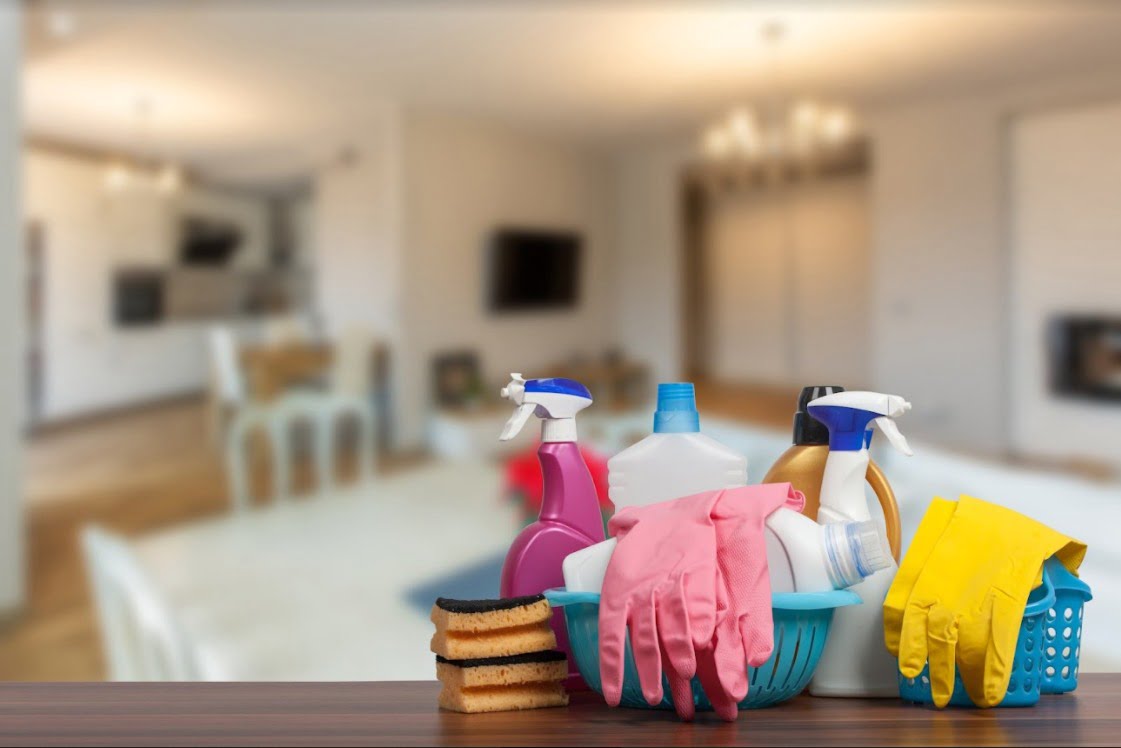
6 Disinfecting Tips To Keep Your Home Safe
Disinfecting Tips To Keep Your Home Safe – Being a homeowner means you carry the responsibility of keeping your home safe to live in, especially if you have kids or senior adults. Thus, it’s always a good idea to make time each day to do some cleaning and a bit of decluttering to keep dust and dirt at bay. Aside from cleaning, another responsibility you must also do is to disinfect your home.
Some may say that cleaning and disinfecting are two similar things. Although when you say cleaning, you’re only eliminating the dust and dirt existing on the surface. On the other hand, disinfecting removes the dirt and kills the bacteria, germs, and viruses attached to it. Thus, cleaning and disinfecting must go hand in hand to attain a safe and healthy home for the household.

Disinfecting your home will reduce the risk of the entire household contracting diseases and illnesses brought by viruses and germs. For your guide, here are six disinfecting tips to keep your home safe.
Table of Contents
1. Disinfect Hard Surfaces
Every area and surface in your home are prone to contamination, especially if you touch or use them every day. Hence, one of the most prone areas for cross-contamination is the kitchen. For instance, you use your kitchen countertop in preparing and washing those raw fruits, vegetables, and meat. The bacteria and germs removed from your food will then be transferred into your countertop, putting anyone at risk for cross-contamination.
Thus, before disinfecting your kitchen, make sure you wear protective gloves first to prevent the bacteria from contaminating your bare hands. Then, take out your non-toxic cleaning products and use them to wipe and scrub off the germs away. It’s recommended to use green cleaning products, as they don’t have harmful chemicals. These chemicals could adversely affect your health when inhaled. You can use a cloth or a brush to disinfect the entire kitchen area then leave it to air-dry.
2. Heat Your Sponges And Cloth Towels
Besides your countertop, the sponges and cloth towels you use for cleaning your dishes can also harbor thousands of germs. This could come from the dirt and food debris they get from the plates. To disinfect them, wash off the attached food debris first and ensure no food particles are left. Then, put them both inside the dishwasher at a high temperature to kill the existing germs. If you don’t have a dishwasher, you can also use the microwave and heat them for one to two minutes. Lastly, store them in a clean and dry place.
3. Wash Your Bedroom Beddings Once A Week
Despite being a private room, your bedroom can also harbor germs and bacteria from the air or clothes you wore outdoors. Dusting off your bed might remove the visible dirt, but it won’t get rid of the germs and dust mites that could be lurking under your sheets. What’s worst, dust mites that thrive on your beddings can lay eggs and eventually cause skin irritations to anyone sleeping on that bed.
So, wash your beddings once a week with a temperature above 130 degrees Fahrenheit to eliminate and kill the dust mites. Once done, you can vacuum the mattress to get rid of any remaining dust.
4. Clean The Carpets And Rugs
Dust and other pathogens love to thrive on the carpets and rugs, especially if the room has no proper ventilation. Unfortunately, dusty and dirty carpets or rugs can cause people to experience flu-like symptoms, including eyes, throat, and nose irritation. To protect your family from illnesses brought by dirty rugs and carpets, here are a few tips for disinfecting them:
- Vacuum your rugs and carpets regularly and put them in the washer once a week.
- Use fans or, better yet, open your doors and windows to promote proper ventilation in your carpeted rooms.
- Invest in an air purifier to keep dust and other airborne pathogens at bay.
It’s also recommended to steam your clean carpets every week to shake off any existing germs and dust.
5. Disinfect High-Touch Areas
Sometimes, the dirtiest parts of your house come from the most unexpected areas such as the high-touch areas. These are the areas or surfaces which you and your family regularly touch or use every day.
Unfortunately, the more hands touch these places, the easier it’ll be for the germs and bacteria to get transferred from one hand to another. These areas may include faucets, gate locks, doorknobs, light switches, drawer handles, refrigerator doors, game consoles, remote controls, and handrails. So, wipe these areas with a cloth and a disinfectant spray every day preferably before going to bed.
6. Sterilize Your Bathroom
Germs and bacteria often thrive in damp places, like your bathroom. Moreover, your toilet is also where everyone leaves their ‘internal dirt’. Thus, it’s very important to disinfect and sterilize your bathroom as often as you can.
Start by sterilizing your toilet bowl and seat with a green or non-toxic cleaner to kill germs. Make sure not to miss the toilet handle as so many hands have touched that area, resulting in cross-contamination. For your bathroom floors, use a disinfectant to scrub and eliminate existing molds and fungus. Moreover, empty the bathroom wastebasket every day to prevent germs from multiplying in these areas. Lastly, after using the bathroom, make sure to keep the place dry by wiping down the shower walls or tub.
Conclusion
The health and safety of the household depend on your cleaning and disinfecting habits. So, take note of these tips and remember to incorporate them into your daily


